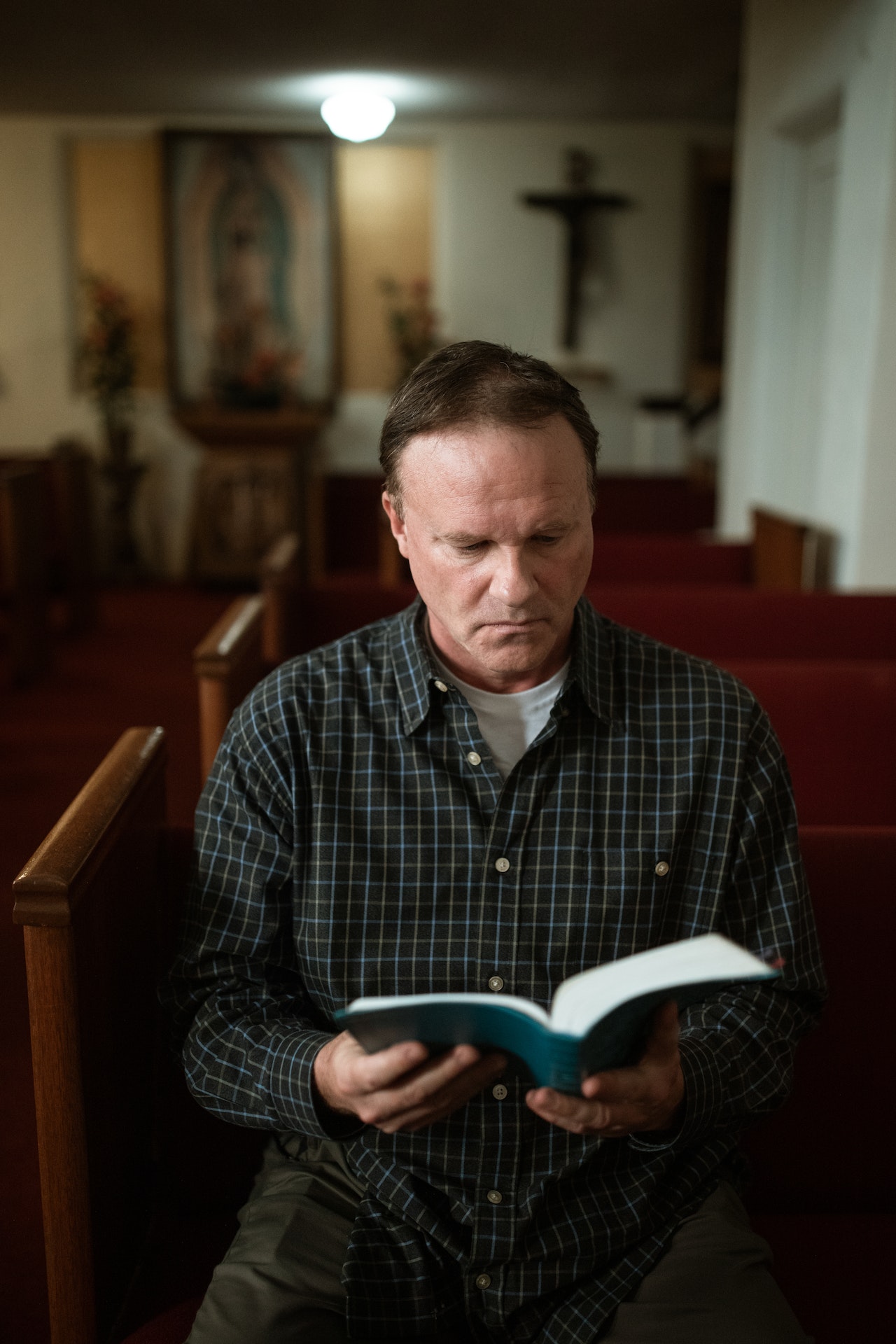The Catholic Church is in communion with several Orthodox churches, which share a common faith and recognize the authority of the Pope. These include the Eastern Catholic Churches, which follow the Byzantine or Eastern traditions, as well as some independent Orthodox churches that have entered into full communion with Rome.
Table of Contents
The Ecumenical Patriarchate of Constantinople
The Ecumenical Patriarchate of Constantinople is one of the oldest and most prestigious Orthodox churches in the world. It holds a special place within the Orthodox community and has a unique relationship with the Catholic Church. In this article, we will explore the history of the Ecumenical Patriarchate and its current status in relation to the Catholic Church.
The Ecumenical Patriarchate traces its roots back to the early days of Christianity when the city of Constantinople, now Istanbul, was the capital of the Byzantine Empire. The church was established by the Apostle Andrew, who is believed to have preached in the region. Over the centuries, the Ecumenical Patriarchate grew in influence and became the spiritual center of the Orthodox world.
One of the key factors that sets the Ecumenical Patriarchate apart is its status as the “first among equals” among the Orthodox churches. The Ecumenical Patriarch, who is based in Istanbul, holds a position of honor and acts as a symbol of unity for the Orthodox community. This unique role has allowed the Ecumenical Patriarchate to play a significant role in ecumenical dialogue with other Christian denominations, including the Catholic Church.
In terms of its relationship with the Catholic Church, the Ecumenical Patriarchate has been engaged in ongoing discussions and efforts to promote unity between the two churches. These efforts have been particularly focused on resolving the historical schism that occurred in 1054, which led to the separation of the Eastern Orthodox and Roman Catholic churches.
While the schism has not yet been fully healed, there have been significant strides towards reconciliation between the Ecumenical Patriarchate and the Catholic Church. In 1964, Pope Paul VI and Ecumenical Patriarch Athenagoras I lifted the mutual excommunications that had been imposed in 1054, marking a historic moment of reconciliation.
Since then, there have been numerous meetings and joint declarations between the leaders of the Ecumenical Patriarchate and the Catholic Church. These efforts have aimed to address theological differences and promote understanding and cooperation between the two traditions.
Despite these positive developments, it is important to note that the Ecumenical Patriarchate is not in full communion with the Catholic Church. While there is a desire for unity, there are still significant theological and ecclesiological differences that need to be addressed.
However, the Ecumenical Patriarchate maintains a close relationship with the Catholic Church and has been actively involved in various ecumenical initiatives. The Ecumenical Patriarch has participated in meetings with the Pope and other Christian leaders, and there have been joint statements and declarations on issues of common concern.
In conclusion, the Ecumenical Patriarchate of Constantinople holds a special place within the Orthodox community and has a unique relationship with the Catholic Church. While there is a desire for unity, there are still theological differences that need to be addressed. Nonetheless, the Ecumenical Patriarchate remains committed to promoting dialogue and understanding between the Orthodox and Catholic traditions, and its efforts towards reconciliation are an important step towards greater unity among Christians.
The Greek Orthodox Church

The Greek Orthodox Church is one of the oldest Christian denominations in the world. With its rich history and deep-rooted traditions, it has played a significant role in shaping the religious landscape of Greece and other parts of the world. But what is the relationship between the Greek Orthodox Church and the Catholic Church? Are they in communion with each other?
To answer this question, we need to understand the concept of communion. Communion refers to the spiritual union between different Christian churches, where they recognize each other’s sacraments and share a common faith. It is a way of expressing unity and fellowship among believers.
The Greek Orthodox Church and the Catholic Church share many similarities in terms of their beliefs and practices. Both churches believe in the Holy Trinity, the divinity of Jesus Christ, and the importance of the sacraments. They also have a hierarchical structure, with bishops, priests, and deacons playing key roles in their respective churches.
However, despite these similarities, the Greek Orthodox Church and the Catholic Church are not currently in full communion with each other. This means that while they may recognize each other as fellow Christians, they do not share the same level of unity and fellowship as they do with other churches within their own traditions.
The main point of contention between the Greek Orthodox Church and the Catholic Church is the issue of papal authority. The Catholic Church recognizes the Pope as the head of the Church and the successor of Saint Peter, while the Greek Orthodox Church does not accept the primacy of the Pope. This difference in understanding has led to a division between the two churches.
Despite this division, there have been efforts to foster dialogue and improve relations between the Greek Orthodox Church and the Catholic Church. In recent years, there have been meetings between the leaders of both churches, aimed at finding common ground and resolving theological differences.
One significant step towards reconciliation was taken in 1965 when Pope Paul VI and Ecumenical Patriarch Athenagoras I lifted the mutual excommunications that had been in place since the Great Schism of 1054. This gesture of goodwill paved the way for further dialogue and cooperation between the two churches.
While the Greek Orthodox Church and the Catholic Church may not be in full communion, there are instances where they can come together and share in the sacraments. In certain circumstances, such as weddings or funerals, members of the Greek Orthodox Church can receive the sacraments in a Catholic Church, and vice versa. This is known as intercommunion and is a way of expressing unity and solidarity among Christians.
In conclusion, the Greek Orthodox Church and the Catholic Church are not currently in full communion with each other. However, they share many common beliefs and practices and have made efforts to improve relations and foster dialogue. While there are still theological differences that need to be addressed, there are instances where members of both churches can come together and share in the sacraments. Ultimately, the goal is to work towards greater unity and fellowship among all Christians, regardless of their denominational affiliations.
The Russian Orthodox Church
The Russian Orthodox Church is one of the largest and most influential Orthodox Churches in the world. With a rich history dating back over a thousand years, it has played a significant role in shaping the religious and cultural landscape of Russia. But what is its relationship with the Catholic Church? Are they in communion with each other?
To understand the current state of affairs, we need to delve into the historical context. The split between the Eastern Orthodox Church and the Roman Catholic Church, known as the Great Schism, occurred in 1054. This division was primarily due to theological and political differences, as well as disputes over authority and jurisdiction.
Since then, the Russian Orthodox Church has remained separate from the Catholic Church. However, it is important to note that this separation does not mean they are in a state of hostility or animosity towards each other. In fact, there have been ongoing efforts to foster dialogue and understanding between the two churches.
In recent years, there have been significant developments in the relationship between the Russian Orthodox Church and the Catholic Church. One of the most notable events was the historic meeting between Pope Francis and Patriarch Kirill in 2016. This meeting marked the first time in history that a Pope and a Russian Orthodox Patriarch had met face-to-face.
The meeting between Pope Francis and Patriarch Kirill was seen as a significant step towards reconciliation and unity between the two churches. It highlighted the shared concerns and challenges faced by Christians around the world, such as the persecution of Christians in the Middle East and the need for greater cooperation in addressing social and moral issues.
While the meeting between Pope Francis and Patriarch Kirill was a positive development, it is important to note that it did not result in full communion between the Russian Orthodox Church and the Catholic Church. The two churches continue to have theological differences and disagreements that need to be addressed before full unity can be achieved.
Despite these differences, there have been instances of cooperation and collaboration between the Russian Orthodox Church and the Catholic Church. For example, in 2019, Pope Francis and Patriarch Kirill issued a joint statement condemning the persecution of Christians and calling for greater religious freedom.
Additionally, there have been instances of joint prayer services and cultural exchanges between the two churches. These initiatives aim to promote understanding and dialogue between Orthodox and Catholic Christians, fostering a spirit of unity and cooperation.
In conclusion, while the Russian Orthodox Church and the Catholic Church are not currently in full communion, there have been significant efforts to foster dialogue and understanding between the two churches. The meeting between Pope Francis and Patriarch Kirill in 2016 marked a historic moment in the relationship between the two churches, highlighting the shared concerns and challenges faced by Christians worldwide. While there are still theological differences that need to be addressed, the ongoing efforts towards reconciliation and unity are a positive step towards greater cooperation and understanding between the Russian Orthodox Church and the Catholic Church.
The Serbian Orthodox Church
The Serbian Orthodox Church is one of the oldest autocephalous (self-governing) Orthodox churches in the world. With a rich history dating back to the early Christian era, it has played a significant role in the religious and cultural life of Serbia and the surrounding regions. But what is its relationship with the Catholic Church? Let’s explore.
First and foremost, it’s important to understand that the Serbian Orthodox Church and the Catholic Church are not in full communion with each other. This means that they do not share the same beliefs and practices, and their clergy cannot freely administer sacraments to each other’s faithful. However, this does not mean that there is no dialogue or cooperation between the two churches.
In recent years, there have been efforts to foster better relations between the Serbian Orthodox Church and the Catholic Church. Both sides have recognized the importance of promoting understanding and unity among Christians, despite their theological differences. This has led to various initiatives aimed at building bridges and finding common ground.
One significant step towards reconciliation was the historic meeting between Pope Francis and Patriarch Irinej, the head of the Serbian Orthodox Church, in 2013. This meeting marked the first time in history that a Pope and a Serbian Orthodox Patriarch had met face-to-face. It was a powerful symbol of the desire for dialogue and mutual respect between the two churches.
Since then, there have been ongoing discussions and joint initiatives between the Serbian Orthodox Church and the Catholic Church. These efforts have focused on areas of shared concern, such as social justice, human rights, and the protection of religious freedom. By working together on these issues, the two churches hope to promote peace and justice in the world.
Another important aspect of the relationship between the Serbian Orthodox Church and the Catholic Church is the recognition of each other’s sacraments. While they may not be in full communion, both churches recognize the validity of each other’s sacraments, including baptism and marriage. This means that a Serbian Orthodox Christian can receive the sacraments in a Catholic Church, and vice versa, under certain circumstances.
It’s worth noting that the Serbian Orthodox Church has its own unique traditions and practices that set it apart from other Orthodox churches. Its liturgy, iconography, and spiritual heritage are deeply rooted in Serbian culture and history. This distinctiveness is something that the Serbian Orthodox Church cherishes and seeks to preserve.
In conclusion, while the Serbian Orthodox Church and the Catholic Church are not in full communion, they have made significant strides towards better understanding and cooperation in recent years. Through dialogue, joint initiatives, and the recognition of each other’s sacraments, they are working towards a more harmonious relationship. The Serbian Orthodox Church’s rich history and unique traditions make it a fascinating part of the Christian landscape, and its ongoing engagement with the Catholic Church adds another layer of complexity to its story.
Conclusion
The Orthodox churches that are in communion with the Catholic Church include the Eastern Catholic Churches, which are in full communion with the Pope and acknowledge his authority. These churches maintain their own distinct liturgical traditions and governance structures while being in communion with the Catholic Church.
For licensing reasons, we must provide the following notice: This content was created in part with the help of an AI.


